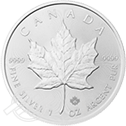Platinum vs. Gold
We shouldn’t have to ask, “Is gold or platinum better for my portfolio?”
Both precious metals have a place. They sometimes share a purpose.
But understanding their differences is key.
This guide will explain the usefulness and drawbacks of each metal.
Luckily, both will serve you well. In the long run, you probably can’t go wrong with either a platinum or gold investment.
Let’s take a look.
Investing in Gold
Physical gold has been a currency and a store of value since the times of ancient civilizations.
Although revered for its beauty, gold has physical attributes that make it much more than a pretty face.
Gold is malleable, conductive, and non-corrosive. It lasts forever.
For many decades, gold backed U.S. currency dollar for dollar. That true backing ended in 1933, but the dollar remained pegged to the price of gold.
President Richard Nixon ended the gold-dollar relationship in 1971. The Federal Reserve needed freedom to enact monetary policy, wanting to print money and deploy other economic strategies to control inflation. The goal: Make the U.S. dollar independent and not fixed to anything tangible.
The fiat currency of the United States was born.
Modern technology relies on gold. It makes efficient and reliable connectors, switches, and relay connectors.
Investors get physical gold via two methods:
- Direct delivery
Advantages of Investing in Gold
Modern investors turn to gold for the following benefits:
- Hedge against inflation. Gold prices in dollars. Inflationary periods force you to spend more dollars on goods and services. Inflation also affects the price of gold, sending it upward. It takes more dollars to buy today’s gold than it took to buy yesterday’s gold. Gold preserves your purchasing power.
- Portfolio diversification. Gold is not correlated to the paper investment market. It belongs to a different asset class. When paper-based investments are down, gold’s value will often go up.
- Tangible asset. Physical gold is real. You can hold it in your hands. It can’t go bankrupt at the push of a button.
- Safe-haven asset. During times of geopolitical turmoil, gold often retains—and increases—its value.
Disadvantages of Investing in Gold
As an informed investor, you need to account for a few challenges before investing in gold:
- No passive income. Gold doesn’t pay a dividend like many stocks do. Gold doesn’t generate interest. Its value is market-driven, based on supply and demand.
- Storage and security concerns. To keep your gold safe, you must securely store and insure your gold. The Gold IRA addresses these needs, but direct-delivery gold does not.
- Price volatility. Short-term gold prices can fluctuate. Factors, such as investor sentiment and stock market health, can affect gold’s value.
Investing in Platinum
Platinum is a beautiful, shiny-white precious metal. This rare and malleable element is dense, conductive, anti-corrosive, and stable.
Some of the world’s finest jewelry pairs platinum with rare gemstones. But platinum has even more uses.
Platinum’s primary use is in catalytic converters for cars, trucks and buses. As a catalyst, platinum helps oxygen bind with poisonous carbon monoxide. The oxidized result is a less harmful engine emission.
You’ll also find platinum in dental fillings, turbine blades, optical fibers, and LCD screens.
Some of the finest government mints manufacture coinage from platinum.
Investors and collectors seek platinum coins for their beauty, scarcity, and value. Platinum coins and bars are available via direct delivery.
With direct delivery, you choose anything that is available and within your budget. Remit payment, and the platinum ships to your door.
The precious metals IRA is another path to platinum ownership. This self-directed retirement account allows ownership of eligible platinum.
To be IRA eligible, platinum must meet the following standards:
- It must be 99.95% pure.
- Bars must originate from approved assayers and manufacturers.
- Coins must come from government mints.
- Coins must be new, uncirculated, and in perfect physical condition.
Advantages of Investing in Platinum
Some advantages of investing in platinum are:
- Portfolio diversification. Physical platinum is not correlated to the stock and paper investments market. It is a tangible asset that doesn’t live or die in cyberspace.
- Short-term appreciation. Economic growth tends to bode well platinum. As demand for products using platinum rises, so does the price of the rare metal.
- Long-term growth. Platinum has proven to be a worthwhile long-term investment. Much like gold—its precious metals cousin—platinum tends to appreciate over time.
- Scarcity. Platinum is rare. Mining companies may find more sources, but no one can make more. Modern technology depends on platinum to function. When there is more need than inventory, the laws of supply and demand move the price of platinum.
Disadvantages of Investing in Platinum
Platinum investing can be challenging. You must know the potential disadvantages to make an informed decision.
- Price volatility. Platinum’s relationship with tech and the automotive sector is a double-edged sword.
- Demand volatility. When product demand falls, so does the price of platinum. Economic slowdowns or downturns can affect platinum.
- Less liquidity. Platinum is not as recognized as gold and silver. Its market is not as robust, and sometimes finding buyers and sellers takes time.
- Geopolitical influence. South Africa and Russia mines the majority of platinum. These countries often experience geopolitical strife, power shortages, and natural disasters. All can have an undue influence on production and on the price of platinum.
Price and Volatility Comparison of Gold and Platinum
You might be asking, “So, if I’m a long-term investor, should I buy platinum or gold?”
Let’s see what the historical data tells us.
Platinum’s rarity and usefulness once meant it enjoyed a higher status—and price—than gold.
Gold, during the same period, moved from $410 an ounce to $922 an ounce.
But, from February 2008 until 2023, gold has left platinum in the dust.
Gold prices have increased from that $922 to $1,900 as of September 2023.
Platinum has decreased from its 2020 highs to about $900 as of September 2023.
Platinum’s price dip may be a result of economic recessions—the 2008 mortgage crisis in particular. In 2020, the beginning of the pandemic sent platinum prices plunging.
Both disasters caused slowdowns in spending and production of goods.
Platinum performed as advertised, falling in price amid less demand for products.
A 50-year glance shows platinum at $172 an ounce in 1973 at the outset of the oil crisis-fueled U.S. recession.
Gold in 1973 averaged $97 an ounce.
Before 2008, platinum was winning the battle of platinum vs. gold investment.
But over time, gold seems to have won the war for long-term supremacy.
Liquidity and Market Accessibility
Consider where you will be when it’s time to liquidate your assets.
Market accessibility is important when deciding on a gold vs. platinum investment.
Owning physical metals gives you the luxury of portability.
Your investment can travel with you—and have real worth—almost anywhere in the world.
In most cities—even small and remote locales— you can convert your gold coins and bars into currency. Gold has a market almost everywhere.
Platinum can be much harder to exchange. Its resale market is a fraction of gold’s market.
Less liquidity means that some exchanges may not accept platinum. Other outlets may charge high transaction costs.
Be prepared for either … or both.
Choosing the Right Investment for You
Deciding between a platinum vs. gold investment comes down to individual needs.
Both metals offer:
- Portfolio diversification
- A tangible investment
- A store of value
- Portability
We’ve seen that gold may be a better long-term investment. We’ve also shown that platinum may be more profitable in the short term.
One important factor differentiates precious metals from paper-based investments. Neither element will go bankrupt and disappear at the push of a button.
The Gold IRA and the precious metals IRA with platinum can solve your precious metals needs.
Included in the precious metals IRA, you get:
- The finest gold and platinum, coins and bars.
- Storage and insurance of the metals.
- Full administration of your IRA.
- A safe, two-way market to buy and sell your coins and bars.
- A knowledgeable account representative to walk you through the process.
Advantage Gold is the industry leader in precious metals education and investment.
We pride ourselves on making the metals acquisition process easy, fun, and painless.
To learn more about your options, call us today or click the link.
We look forward to speaking with you soon!
Tags: gold vs platinum investment, is gold or platinum better, platinum or gold investment, should i buy platinum or gold


